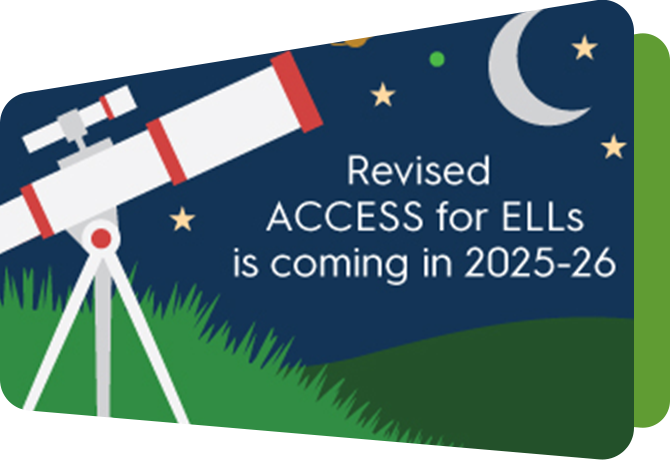Reading With Multilingual Learners
Expanding reading instruction to meet the needs of multilingual learners
Literacy instruction for multilingual learners (MLs) requires intentional, targeted support. Schools and districts across the United States use a variety of instructional approaches, which includes approaches based on the science of reading. Educators can build upon the local curriculum to incorporate the linguistic and cultural resources that MLs bring to the classroom. Addressing the unique needs of MLs is essential to enhance reading instruction so that they simultaneously learn a new language while acquiring literacy skills.
What Educators Can Do
Educators can ensure that multilingual learners are included in literacy programs by expanding reading instruction to intentionally incorporate and build upon the strengths that they bring to the classroom. This involves creating learning environments and designing instructional strategies that leverage MLs unique perspectives and experiences to foster deeper understanding and engagement in reading. By doing so, educators can support all students, including MLs, in becoming successful, confident readers. Collaboration between ELA and ESL/bilingual teachers is also essential. See the Tools and Resources section below for WIDA-developed support in this work.

Building on Assets
Multilingual learners come to the classroom with a wealth of knowledge – knowledge that serves as a powerful connection for students as they read and learn about new things in school and in the world. It’s essential that educators learn from and build on MLs’ background knowledge and their histories of participation in literacy.
Everyday literacy practices, such as helping a sibling with homework or translating for a family member at the grocery store, are powerful experiences that contribute to the development of academic literacy in content areas. These activities, often rooted in home and community settings, involve critical thinking, problem-solving, and the practical application of language skills, all of which are essential for academic success.
By valuing and integrating these practices as academic resources, educators can create more inclusive and culturally responsive learning environments. This integration supports students to see the connection between their everyday lives and academic learning.

A Case Study in Literacy Engagement With MLs
This video features Carmen, an elementary teacher in Minnesota. With the district curriculum, she engages students in building personal connections to the text by connecting to students’ home literacy experiences and their emotions. Watch Carmen work with her small group of 2nd graders prior to reading a text on the lunar landing.
Learn more about Carmen and her expertise in literacy in this Conversations with Educators article.
Nurturing Multilingual Readers
To support multilingual learners’ growth as readers, it is important to learn about the language and literacy skills they bring to the classroom. One way to do this is by conferring with students or having a one-on-one or small group conversation about their learning. This practice can serve multiple purposes such as setting goals, providing feedback, learning about a students’ prior knowledge and experiences, and learning about their home literacy practices.
Use the tools below to gather information about students' reading strengths and preferences across languages and generate ideas for scaffolding and personalizing learning in future lessons.
Creating a Reader Portrait
Start with what you already know, questions you have, English language development (ELD) data in all domains, and what you know about the student’s home language(s). This is a chance to reflect on what you understand about a student’s reading and what you could learn more about.
Reading Observation Tool
Plan to observe a multilingual reader engaging in two or three activities involving reading comprehension in any content area. Try to observe the student during activities that are structured in different ways; for example during teacher-led, whole-group instruction and during small group or independent activities. If you are observing the student during a class you teach, take a few moments after you teach the lesson to write down your observations.
Reading Conference Planning
Set a goal for the conference. Decide which areas of reading comprehension you are going to focus on and choose one or two texts or text excerpts to use during the conference.
Other Tools and Resources
WIDA Focus Bulletin
![]() Get classroom-ready resources, as well as examples and video from classrooms where educators are working to expand reading instruction to make it more inclusive and more effective for MLs.
Get classroom-ready resources, as well as examples and video from classrooms where educators are working to expand reading instruction to make it more inclusive and more effective for MLs.
Literacy Map
A literacy mapping activity supports students to reflect on literacy in their daily lives and enables the teacher to learn about their students’ literacy assets. Use this resource to plan a literacy mapping activity with students.
Self-Paced Workshop
WIDA now offers a self-paced workshop, Reading Comprehension Across Content Areas with Multilingual Learners, for educators whose education agencies participate in WIDA’s self-paced workshops.
WIDA Snapshot Series
These WIDA Snapshots provide insights from relevant research and suggest ways to engage the significant strengths that MLs bring to their literacy development.
Reading Instruction Through a Multilingual Lens
When designing literacy instruction for MLs, it's important to consider factors beyond those addressed in curriculum and instruction designed for monolingual students. Educators working with MLs often consider how the science of reading — a research-based body of knowledge about how people learn to read — can inform effective literacy instruction for MLs, and how the WIDA English Language Development Standards Framework both addresses the science of reading and intersects with reading instruction. Learn more in the WIDA Guideposts for Literacy Instruction and two-part article series.




